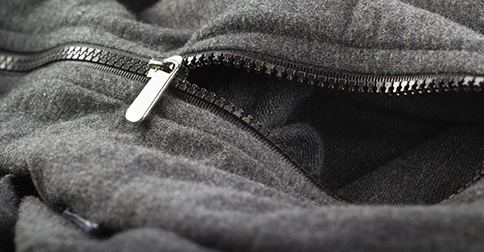After you’ve lost a limb, your old clothes may not work as well anymore. Even if they still fit, it may be far too labor intensive for you to maneuver them over a prosthetic device, fasten a lot of buttons, or to reach as far as you need to in order to get something on! So what can you do? The answer lies in adaptive clothing, which is clothing and footwear designed specifically for people who may have a restricted range of motion or otherwise have difficulty dressing themselves.
What Is Adaptive Clothing?
Designed for post-surgery individuals, people with disabilities, elderly people, children and adults with developmental delays, people with arthritis, and – of course – people with limb loss, adaptive clothing is meant to make the dressing process easier and smoother. It provides easy access to specific body parts without requiring the complete removal of the garment, saving its wearer a lot of time and energy.
Adaptive clothing comes in a variety of styles and with a wide range of medical purposes in mind. Most of them have zippers that make it easy to access a body part without removing the clothing, allowing the person wearing the garment to maintain a certain level of independence. Additionally, it allows for fast access to medical devices (such as a prosthesis) for both the patient and a nurse or caregiver.
What Options Are Available?
Among the many different forms adaptive clothing can take, you will find:
- Velcro or snap closures (as opposed to buttons)
- Front-closing bras
- Wrap-around skirts
- Zippers located conveniently in the front
- Open-back clothing
- Shoes with Velcro
- Side-opening pants
- Designs that allow dressing while seated
Important Qualities for Your Adaptive Clothing
When shopping for adaptive clothing, it’s important to keep a few things in mind. First, you don’t want something that’s going to feel abrasive or irritating. Secondly, make sure that the design allows you to stay modest and dignified! With wrap-around items in particular, you want a generous amount of overlap, and – if you are in a wheelchair – a high-backed garment.
Make sure you check the location of fasteners. You don’t want an excessive amount of pressure to be applied to a sore or tender area, because this can produce sores, which can get infected. Also look for high-quality fabrics that will stand up to a rigorous usage and cleaning schedule so that you don’t end up with a fraying or stretched-out garment!
More Questions? BioTech Is Here!
Whether you’re interested in adaptive clothing or you’ve got questions about post-op care, BioTech is here to help. Contact us today and let us take great care of you!
